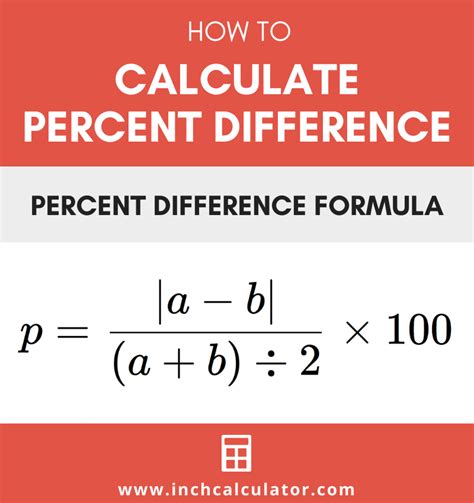How to Calculate Percentage Difference: A Simple Guide
Calculating percentage difference might seem daunting, but it's a fundamental skill with wide-ranging applications, from analyzing financial reports to tracking website traffic growth. This guide breaks down the process into simple, easy-to-understand steps, equipping you with the knowledge to confidently tackle percentage difference calculations in any context.
Understanding Percentage Difference vs. Percentage Change
Before diving into the calculations, it's crucial to understand the difference between percentage difference and percentage change. While often used interchangeably, they represent distinct concepts:
- Percentage Change: This measures the change between two values relative to the original value. It's commonly used to show growth or decline over time (e.g., sales increase, population growth).
- Percentage Difference: This measures the difference between two values relative to their average. It's used to compare two values irrespective of which one came first.
Calculating Percentage Difference: The Formula
The formula for calculating percentage difference is:
|Value 1 - Value 2| / ((Value 1 + Value 2) / 2) * 100%
Let's break this down:
- Find the difference: Subtract one value from the other (the order doesn't matter since we'll use the absolute value).
- Find the average: Add the two values together and divide by 2.
- Divide the difference by the average: This gives you the decimal representation of the percentage difference.
- Multiply by 100%: Convert the decimal to a percentage.
Important Note: The absolute value (represented by the vertical bars | |) ensures the result is always positive, regardless of which value is larger.
Step-by-Step Examples
Let's illustrate with some examples:
Example 1: Comparing Sales Figures
Suppose your sales for January were $10,000 and for February were $12,000. What's the percentage difference?
- Difference: |10000 - 12000| = 2000
- Average: (10000 + 12000) / 2 = 11000
- Divide: 2000 / 11000 ≈ 0.1818
- Multiply by 100%: 0.1818 * 100% ≈ 18.18%
Therefore, the percentage difference in sales between January and February is approximately 18.18%.
Example 2: Comparing Website Traffic
Your website received 5000 visits last week and 6000 visits this week. What's the percentage difference?
- Difference: |5000 - 6000| = 1000
- Average: (5000 + 6000) / 2 = 5500
- Divide: 1000 / 5500 ≈ 0.1818
- Multiply by 100%: 0.1818 * 100% ≈ 18.18%
The percentage difference in website traffic is approximately 18.18%.
When to Use Percentage Difference
Percentage difference is particularly useful when:
- Comparing unrelated values: Unlike percentage change, it doesn't assume a chronological relationship between the values.
- Analyzing discrepancies: It helps highlight the magnitude of the difference between two figures.
- Presenting comparative data: It offers a clear and concise way to present comparisons in reports and presentations.
Mastering Percentage Difference Calculations
Understanding how to calculate percentage difference is a valuable skill for anyone working with data. By following these steps and practicing with various examples, you'll quickly master this important calculation and confidently apply it to your work. Remember to choose the appropriate calculation – percentage change or percentage difference – based on the context of your data.
